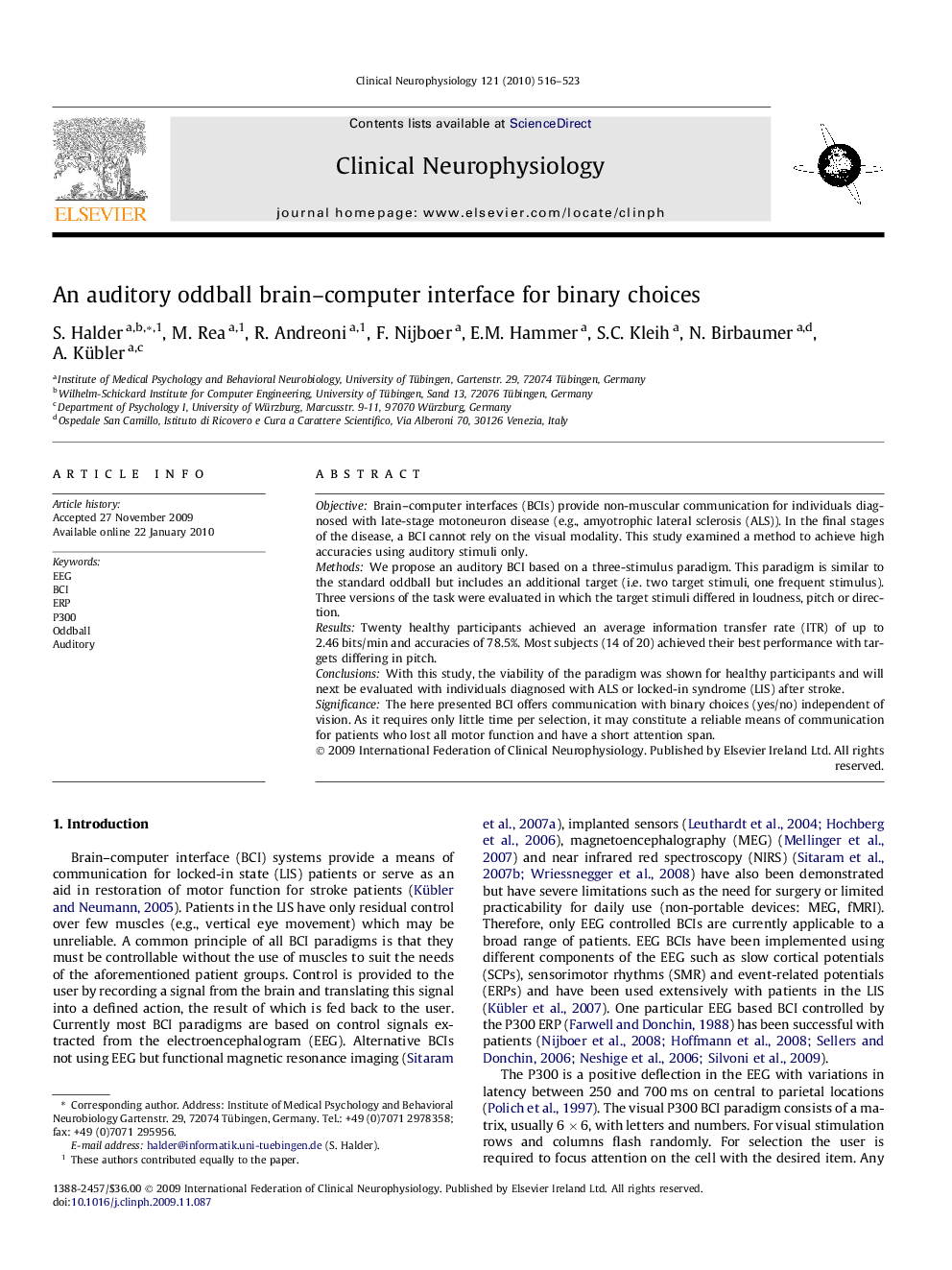| Article ID | Journal | Published Year | Pages | File Type |
|---|---|---|---|---|
| 6009192 | Clinical Neurophysiology | 2010 | 8 Pages |
ObjectiveBrain-computer interfaces (BCIs) provide non-muscular communication for individuals diagnosed with late-stage motoneuron disease (e.g., amyotrophic lateral sclerosis (ALS)). In the final stages of the disease, a BCI cannot rely on the visual modality. This study examined a method to achieve high accuracies using auditory stimuli only.MethodsWe propose an auditory BCI based on a three-stimulus paradigm. This paradigm is similar to the standard oddball but includes an additional target (i.e. two target stimuli, one frequent stimulus). Three versions of the task were evaluated in which the target stimuli differed in loudness, pitch or direction.ResultsTwenty healthy participants achieved an average information transfer rate (ITR) of up to 2.46Â bits/min and accuracies of 78.5%. Most subjects (14 of 20) achieved their best performance with targets differing in pitch.ConclusionsWith this study, the viability of the paradigm was shown for healthy participants and will next be evaluated with individuals diagnosed with ALS or locked-in syndrome (LIS) after stroke.SignificanceThe here presented BCI offers communication with binary choices (yes/no) independent of vision. As it requires only little time per selection, it may constitute a reliable means of communication for patients who lost all motor function and have a short attention span.
